Table of contents
Blackberries ( Rubus sectio Rubus ) are a refreshing ingredient in fruit salads or desserts when eaten raw . The group of true blackberries is very diverse and therefore extremely difficult to distinguish between .
Use in the kitchen:
Blackberries are juicy and tasty. Blackberries are suitable for eating fresh, but also for smoothies or as a cake topping. Blackberries are also used to make jam, jelly, chutney, sorbet, juice, syrup, wine and liqueur. Blackberries are often used to flavor fruit vinegar, punch or fruit salads.
The taste of blackberries is very varied. The sweet, aromatic fruits often have a sour note. Some people describe the blackberry taste as a mixture of grapes, plums, apples or coconut. The slightly smaller, wild blackberries are often much more aromatic than cultivated varieties.
Similar to theraspberry ( Rubus idaeus ), not only the berries are used here: the blackberry leaves are also used to make tea because of their pleasant taste. Fermented blackberry leaves are a substitute for Chinese tea (black tea): this tea is often sold as a theine-free breakfast tea. 1 The flowers of the young plants are also suitable for tea, as a flavoring or as a decoration on desserts. Dried blackberries can also be brewed as a tea. 2
Vegan recipe for blackberry chutney:
Ingredients: 600 g blackberries, 200 g sugar , 1 teaspoon sea salt , 1/2 thumb of fresh ginger , 1 chilli pepper , 1 red onion , 1 cinnamon stick , 5 grains of allspice , 150 ml vinegar ,black pepper .
Preparation: Mix the washed blackberries with sugar and salt, press down a little and leave to stand for about 1 hour. In the meantime, peel the ginger and onion and dice finely. Finely chop the chili without seeds. Finely grind or crush the allspice berries.
Then bring the blackberries to the boil and puree. Press the mixture through a fine-mesh sieve or use a food mill (Passe-vite, Flotte-Lotte). Now add the remaining ingredients to the jelly and bring the whole thing to the boil again. Let the chutney simmer for around 2 hours over a low heat. Stir regularly to prevent the mixture from burning. At the end, season with sugar, salt and black pepper. Pour the chutney into sterile jars while it is still hot and leave the lid on for around 5 minutes, as you would with jam.
Making tea from blackberry leaves:
Tea made from blackberry leaves, sometimes mixed with raspberry leaves, is very beneficial for your health. For one cup of tea you need about 2 teaspoons of dried leaves, which you pour boiling water over and leave to steep for about 10 minutes. After straining, you can sweeten the tea as you like.
Vegan recipes with blackberries can be found under the note: " Recipes that have the most of this ingredient ".
| Not only vegans or vegetarians should read this: Vegans often eat unhealthily. Avoidable nutritional mistakes . |
Shopping - where to buy?
Fresh blackberries are available almost all year round at supermarket chains such as Coop , Migros , Denner , Volg , Spar , Aldi , Lidl , Rewe , Edeka , Hofer etc. Central Europe offers an excellent climate for blackberries, which is why you can also buy them locally during the season (July - October). Conventional blackberries often contain pesticide residues, which is why we recommend organically grown berries (organic quality).
Found in the wild - Season:
The blackberry can be found in forests, on hedges, on rubble heaps and in heathland. The collective species Rubus fruticosus is very diverse and occurs in small species that are difficult to distinguish. 3 The wild, thorny shrub has spiny, toothed leaves and purple-black aggregate drupes. 4 All blackberry species, whether wild or cultivated, are non-toxic, including their leaves. In the northern hemisphere, blackberry leaves are mainly picked in the first half of May, and the berries between July and October (season).
Storage:
Fresh berries should be used very quickly. If you still want to store them, lay them as flat as possible in small bowls so that they don't squash each other. They will last in the fridge for up to two days. Bruises can lead to mold. The fresh fruit can be preserved optimally by freezing. They can then be used very well for jam, ice cream, cakes, smoothies, etc.
Ingredients - nutritional value - calories:
The energy content of 100 g of blackberries is 43 kcal. Fat and protein content are very low at 0.5 and 1.4 g respectively. Blackberries contain approx. 9.6 g carbohydrates and 5.3 g/100g fiber in the form of soluble and insoluble dietary fiber. 5
Blackberries contain around 0.65 mg of manganese per 100 g, andraspberries contain a similar amount (0.67 mg). This trace element is important for healthy cartilage and connective tissue. Wheat germ and hazelnuts contain particularly high levels of it. 5
Black berries contain 21 mg of vitamin C per 100g, an important antioxidant vitamin. Gooseberries and raspberries have a little more, at around 27 mg. Red currants have a very high vitamin C content, at 41 mg. But vegetables such as yellow peppers should not be underestimated either: 184 mg per 100g. 5
Fresh blackberries (blackberries) contain 20 µg/100g of fat-soluble vitamin K , andblueberries have a similar content. Green vegetables such as chard contain particularly high levels of this vitamin (830 µg). 5
Blackberries do not contain a lot of folate, a folic acid-active substance group, at 25 µg/100g. However, regular consumption provides a good amount. The daily requirement for an adult is 300 µg, pregnant women need around 550 µg daily. 6 The water-soluble vitamin is important for cell renewal. Pulses (eg lentils : 479 µg or peanuts : 240 µg) provide a lot of folate. 5
The antioxidant vitamin E is said to protect against free radicals. Blackberries contain the fat-soluble vitamin in a similar amount to cranberries (1.2 mg/100g). Nuts ( almonds : 25.6 mg, hazelnuts : 15 mg) are particularly good sources. 5
Blackberries also contain potassium , magnesium and zinc . Blackberries are also one of the fruits with a high antioxidant content, especially due to the large number of polyphenolic ingredients (ellagic acid, tannins, quercetin (natural coloring), gallic acid, cyanidin and anthocyanins).
The complete ingredients of blackberries, the coverage of the daily requirement and comparison values with other ingredients can be found in our nutrient tables. In the article Nutrients explained you will get a detailed insight into the topic.
Ratio of omega-6 (LA) to omega-3 fatty acids (ALA) in berries:
Berries and wild berries usually have a very good ratio between LA (linoleic acid) and ALA (alpha-linolenic acid) . In general, berries have a low fat content and the amounts of omega-3 and omega-6 are accordingly low. In relation to the total fat content, however, the polyunsaturated fatty acids make up a high proportion.
The body uses alpha-linolenic acid to produce other omega-3 fatty acids (EPA and DHA), which have an anti-inflammatory effect, while linoleic acid is used to produce arachidonic acid, which has an inflammatory effect. The good ratio of omega-6 to omega-3 is another reason why the berries are considered a very healthy food.
Information on individual values of ALA and LA (source: USDA, Önwt, Debinet):
Berry (raw) | L.A. (g/100g) | ALA (g/100g) | Ratio LA:ALA | Total fat (g/100g) | source |
2.6 | 1.8 | 1.5:1 | 7.1 | Önwt | |
0.6 | 0.5 | 1:1 | 1.7 | Önwt | |
blackberry | 0.19 0.4 0.36 | 0.09 0.3 0.26 | 2:1 1.25:1 1.3:1 | 0.34 1.0 1.0 | USDA Önwt Debinet |
Forest Blackberry | 0.4 | 0.3 | 1.25:1 | 1.0 | Önwt |
0.2 | 0.2 | 1:1 | 0.5 | Önwt | |
0.3 | 0.2 | 1.5:1 | 0.7 | Önwt | |
0.2 0.22 | 0.2 0.15 | 1:1 1.5:1 | 0.6 0.6 | Önwt Debinet | |
0.25 0.1 | 0.13 0.1 | 2:1 1:1 | 0.46 0.3 | USDA Önwt | |
Forest Strawberry | 0.1 | 0.1 | 1:1 | 0.4 | Önwt |
Forest Raspberry | 0.1 | 0.1 | 1:1 | 0.3 | Önwt |
Boysenberry | 0.11 | 0.08 | 1.5:1 | 0.3 | Debinet |
0.11 | 0.07 | 1.5:1 | 0.26 | USDA | |
0.09 | 0.06 | 1.5:1 | 0.21 0.4 | USDA Debinet | |
0.27 | 0.05 | 5:1 | 0.4 | USDA | |
0.05 0.04 | 0.04 0.03 | 1:1 1.25:1 | 0.13 0.2 | USDA Debinet |
Health aspects - effects:
What are blackberries good for? The secondary plant substances (anthocyanins, phenols, etc.) contained in the superfruit have an antioxidant effect in the body. 7 Extracts of the black berry fight reactive nitrogen and oxygen compounds (free radicals). These compounds can trigger cardiovascular diseases such as endothelial dysfunction or vascular failure. 8
Blackberries can protect against age-related neurodegenerative diseases and bone loss. In addition, experiments have confirmed that blackberry extracts have antimutagenic effects in vitro and in vivo . Whether blackberries really help against diabetes, microbes or inflammation needs to be investigated in further studies. 7
Studies have shown that regular consumption of blackberries increased fat burning in overweight subjects. Eating them also helps diabetics because it increases the sensitivity of the pancreatic hormone (I). 9 The high fiber content of blackberries has a positive effect on digestion.
Dangers - intolerances - side effects:
When picking berries in the wild, it is always important to wash them before eating them. Fruits close to the ground may contain dirt or parasites. Infection with the eggs of the fox tapeworm ( Echinococcus multilocularis ) is rare, but still possible. It can cause serious liver damage. Not only foxes, but also dogs and cats can be carriers. 10
Blackberries have relatively little fructose (3.1 g/100g), which is why you can enjoy them in small quantities even if you have a fructose intolerance. Each person has to decide individually how many berries are digestible.
Use as a medicinal plant:
Blackberries and their leaves are used as an astringent against diarrhea due to their tannins or to treat inflammations in the mouth and throat by gargling. 2 In certain chronic skin diseases, blackberries are used as an ingredient in external washes.
Folk medicine - natural healing:
Blackberries and their leaves are said to have a calming effect. 2 Blackberry leaves also have an expectorant effect, which is often used for colds. During pregnancy, blackberry leaf tea is recommended shortly before birth (from about 4 weeks beforehand), as it is said to loosen the tissue and make birth easier.
Occurrence - Origin:
The blackberry bush and its healing powers have been known since ancient times. 1 The Greek poet Aeschylus and the doctor Hippocrates described the blackberry as a medicinal plant. 11
The blackberry is very widespread in temperate regions of Europe, North Africa, the Middle East and North America.
Taxonomy:
There are many different species (type and collective species), varieties and hybrids of blackberries. Here we name the European blackberries, which mainly include the following groups of the genus Rubus subg. Rubus : 13
- Rubus sect. Rubus L. - collective species Rubus fruticosus agg. is the common blackberry;
- Rubus sect. Corylifolii Lindley - collective species Rubus corylifolius agg. is the hazel-leaf blackberry;
- Rubus sect. Caesii Lejeune & Courtois is known as Rubus caesius (species) or dewberry.
Growing in the garden or as a pot plant:
Blackberries need sunny to partially shaded locations, which is why they are found in light forests or on the edges of forests. They prefer soils rich in lime and nitrogen.
The stems of the blackberry initially grow upwards, then bend and hang down to the ground, where they form runners and take root. To cultivate them, you need a trellis. The distance between the plants should be about 2-3 m.
How and when should you prune blackberries? Regular thinning and removing suckers prevents the growth of undergrowth. Cut off worn-out (2-3 year old) branches at the ground and shorten the new shoots to around 2-5 branches. 12
In Europe, the Armenian blackberry ( Rubus armeniacus ) is often planted in gardens. This invasive neophyte now grows wild in many regions of Europe and North America. There are also numerous thornless varieties or hybrids.
When do blackberries bloom? The flowering period is not uniform. The main flowering period is from May to the end of July, but they bloom into winter. On one bush you can find flowers, unripe and ripe berries at the same time. 3
Danger of confusion:
The blackberry ( Rubus fruticosus agg.) can easily be confused with the dewberry (or field blackberry), but it does not pose a danger. Rubus caesius is very widespread. Its berries are a little smaller than those of the blackberry, but very plump and juicy. The hairy, creeping shrub can reach a height of up to 40 cm, the thorns are soft and bristle-like. 4
The loganberry ( Rubus x loganobaccus ) was crossed from a blackberry species and the raspberry. This variety arose by chance in California, probably from Rubus ursinus and the raspberry variety "Red Antwerp". 14 Its fruits are elongated red aggregate drupes with a sour taste. The name comes from JH Logan, an American judge.
The boysenberry ( Rubus ursinus x idaeus ) is an American hybrid between the loganberry and a blackberry species. 15 The shrub and the berries are very similar to the blackberry.
Animal protection - species protection - animal welfare:
Wild blackberries are also ideal sources of food for animals. Not only bird species such as blackbirds, song thrushes and blackcaps love blackberries, but also the hazel dormouse and the dormouse appreciate the vitamin-rich fruits.
General information:
The genus Rubus also belongs to the rose family (Rosaceae). Within this genus, the section Rubus sectio Rubus is known, which includes several thousand species. It is very difficult to assign every plant to a species. The best known is the collective species Rubus fruticosus agg. 12
According to Wikipedia , Rubus fruticosus L. has been formally defined as the type species of the genus since 2006, but the term is not actually needed to name the species. However, it often appears as Rubus fruticosus agg. for the name of the collective species when the distinction between the individual species of Rubus subg. Rubus sect. Rubus is not necessary or relevant. 16
The word blackberry comes from the Old High German word brāmberi, meaning thorn bush berry or berry of the thorn bush. From a biological point of view, however, the blackberry does not have thorns, but rather prickles. 16
Botanically, blackberries are not classified as berries, nor as individual fruits. Each small individual berry contains a small stone core, which is why they are classified as aggregate drupes. 16
Blackberry stains on clothes are often very difficult to remove. It is best to treat them with vinegar or lemon juice before washing; the natural bleaching effect of the acid contained in them helps against annoying fruit stains.
Alternative names:
Popular trivial names are: Brambeere, Bramel, Brämel, Brombesing, Bromedorn, Bromelbeere, Brumenbeere, Braunbeere, Frombeere, Hirschbollen, Kratzbeere, Kratzelbeere, Moren, Nurr, Rahmbeere 17 , Schwarzbeere, Feldschwarzbeere, Hundsbeere, Kroatzbeere, Schwarze Haubeere. 3
The drug name of blackberry leaves is: Rubi fruticosi folium , of blackberry juice: Rubi fruticosi sirupus .
The blackberry is called blackberry or brambleberry in English, the blackberry bush is called bramble bush or blackberry bush.
Literature - Sources:
Bibliography - 17 Sources
| 1. | Niederegger O, Mayr C. Heilpflanzen der Alpen. Tyrolia: Innsbruck. 2006. |
| 2. | Fleischhauer SG, Guthmann J, Spiegelberger R. Enzyklopädie Essbare Wildpflanzen. AT Verlag: Aarau. 4. Auflage. 2018. |
| 3. | Pahlow M. Das grosse Buch der Heilpflanzen. Gesund durch die Heilkräfte der Natur. Nikol: Hamburg. 2013. |
| 4. | Mabey R. Essbar. Wildpflanzen, Pilze, Muscheln für die Naturküche. Haupt: Bern, Stuttgart, Wien. 2013. |
| 5. | USDA United States Department of Agriculture. |
| 6. | DGE Deutsche Gesellschaft für Ernährung. |
| 7. | Kaume L, Howard LR, Devareddy L. The Blackberry Fruit: A Review on Its Composition and Chemistry, Metabolism and Bioavailability, and Health Benefits. Journal of Agricultural and Food Chemistry. 2011;60(23). |
| 8. | Serraino I, Dugo L, Dugo P et al Protective effects of cyanidin-3-O-glucoside from blackberry extract against peroxynitrite-induced endothelial dysfunction and vascular failure. Life Sci. 2003;73(9). |
| 9. | Solverson PM, Rumpler WV, Leger JL et al. Blackberry Feeding Increases Fat Oxidation and Improves "Hormone-I-Sensitivity" in Overweight and Obese Males. Nutrients. 2018;10(8). |
| 10. | BAG Bundesamt für Gesundheit. Schweizer Eidgenossenschaft. Fuchsbandwurm (Echinokokkose). 2019. |
| 11. | Bown D. Encyclopedia of Herbs & their uses. DK: London. 1996. |
| 12. | BdB Handbuch Teil VI. Obstgehölze. 6. Auflage. Fördergesellschaft "Grün ist Leben" Baumschulen, Pinneberg. 1985. |
| 13. | Weber HE. Gliederung der Sommergrünen Brombeeren in Europa (Rubus L. subgenus Rubus subsectio Rubus). Osnabrücker Naturwissenschaftliche Mitteilung 26. 2000. |
| 14. | Huber H. Rosaceae in Hegi G. Illustrierte Flora von Mitteleuropa. 2. Auflage. 1961;4(2). |
| 15. | Vaughan JG, Geissler C, Nicholson B et al. The new Oxford book of food plants. Oxford University Press. 2009. |
| 16. | Wikipedia Brombeeren. |
| 17. | Heilkraeuter.de Brombeere (Rubus fruticosus). |

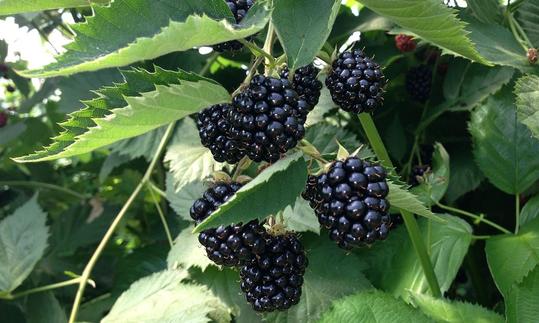

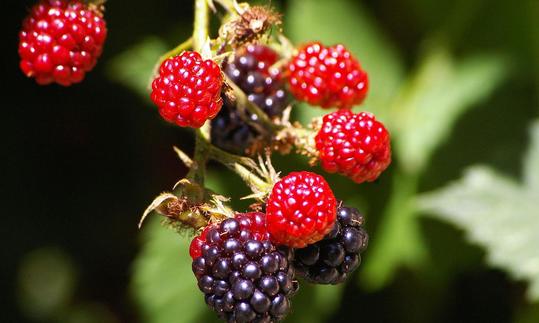

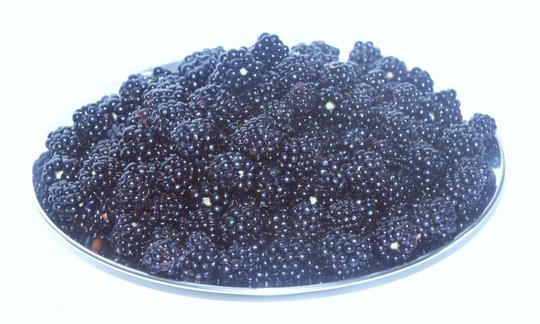

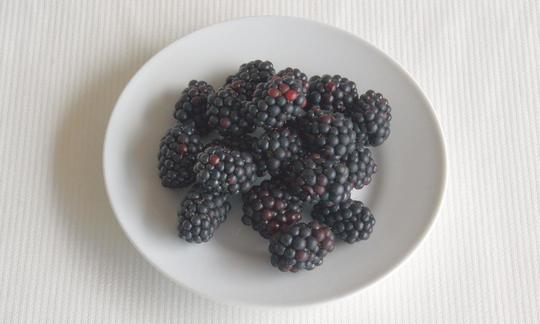

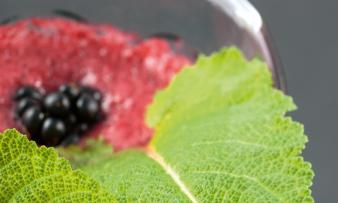





Comments